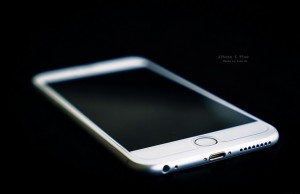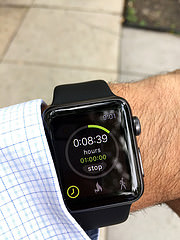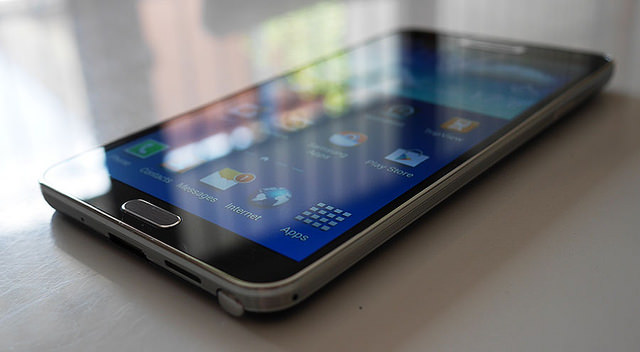With smartphones becoming more important every day, a mobile first marketing approach is becoming critical for modern businesses. Mobile device users are currently spending on average over 3 hours and 45 minutes per day on their mobile devices so the suggestion of a mobile first approach should be no surprise (Flurry).
 While many businesses still make mobile an afterthought, savvy business people are making mobile a priority to capitalize on trends in the market.
While many businesses still make mobile an afterthought, savvy business people are making mobile a priority to capitalize on trends in the market.
Before just pushing ahead with an iPhone application developer or Android application developer, it is best to understand how mobile can best fit within your overall marketing plan, and even more importantly, how mobile fits with your customer’s path to purchase. Mobile application development is about more than bringing and app to market, it is about creating an application that provides value for your business and customers.
Serve your customers
Start by asking yourself how your application can serve the needs of your customers. Don’t be afraid to think outside the box. Some times the best application come out of non linear thinking. But don’t be afraid to look at trends to evaluate utility with respect to what your consumers are used to in the market.
Also, remember when you build your application to make it a continuation of your branding and to focus on creating a uniform experience with your web site or physical locations.
Don’t forget to optimize your user’s experiences. Keep their convenience in mind as no consumer wants to use a complicated application that is not intuitive. No where is this more important than with a small screen. Users will quickly delete mobile applications that aren’t easy to use.
Utilize location based marketing
One of the biggest advantages of mobile marketing is the location data created on user’s mobile devices. This data can be utilized to create better mobile marketing strategies. For instance, promotions delivered within 5 miles of a retail location are shown to have a spike in effectiveness. Mobile allows you to deliver messaging while users are in the right location for your messaging to have maximum effect.
Personalize the experience
Not only do you need to utilize the context of location, but the most effective applications and mobile marketing programs are personalizing their experiences to users. Messaging is most effective when it is relevant and mobile users are typically willing to give you the information you need to improve their experiences’ while on your application.
Make your website fast and responsive
Make sure your website is responsive and friendly. You will need to keep mobile connection speeds and screen sizes in mind, as poor experiences will lead users to abandon your site quickly. Avoid large images and make sure your visitors can navigate your site easily. Mobile web visitors are often on the go so convenience is at a premium. Don’t forget to optimize your site with an easy to access phone number and directions to your store.
Photo: Luke Ma (Flikr) http://bit.ly/1AVnVq6
These days wearables are getting more and more attention.
Many brands are still working on their mobile app development projects or maybe just recently decided to switch to a responsive web site and now wearables are getting thrown into the mix.
Have no fear.
 To the savvy marketer all of these items are opportunities to outdo your competition and grab market share. Opportunity is abound in the mobile age and wearables add to the opportunity.
To the savvy marketer all of these items are opportunities to outdo your competition and grab market share. Opportunity is abound in the mobile age and wearables add to the opportunity.
In the digital age, and most specifically over the most recent years, many businesses have become focused on content marketing. Many businesses have a content marketing strategy for their web, mobile and social presences.
You are going to need a completely different mindset for wearables.
Wearables typically have a very different form factor than smartphones and require a different strategy. When it comes to wearables, successful strategies will focus on experiences. They will augment and improve the activities a user is engaged in.
A perfect example of this would be fitness apps with timers that can help improve workouts by making timers easily available on a smart watch. Apps for wearables that can improve the experience of users will get used.
Keep in mind that there are many types of wearables available. Don’t just focus on watches because they are getting the attention. There are many opportunities when it comes to wearables, for instance Google is currently working with Levis to integrate computers into clothing.
Keep in mind that many wearables will allow you to add contextual information into your program with the assistance of location based data. One of the greatest strengths of mobile is its ability to apply the context of location into communications. By utilizing proximity data and data that you collected previously regarding preferences, etc, your wearable program can be extremely relevant to your users.
As with any modern business program, data is more important than ever, and it will be no different with your wearable program. Collecting and interpreting data will be more important than ever and businesses will need to plan ahead to be able to deliver the types of experiences that the savvy modern consumer demands.
Photo: Ted Eytan (Flikr) http://bit.ly/1ET6pxC
Marketers in the past never had opportunities like they do now. With a mobile device, consumers have a regular connection to brands right in the palm of their hand.
With mobile devices shopping has been evolving and changing as users are leveraging the power of mobile devices to enhance their shopping experiences. In fact, Google found that 84% of smartphone owners use their devices while in physical stores.
 The shopping process has grown, in fact, consumers most likely started shopping on their mobile device before they ever entered your store. Due to this growth in the shopping process, brands can extend their marketing strategies. Brands can start engaging consumers in the shopping process before they arrive and continue to interact with users after they leave or even while they are at a competitor’s store.
The shopping process has grown, in fact, consumers most likely started shopping on their mobile device before they ever entered your store. Due to this growth in the shopping process, brands can extend their marketing strategies. Brands can start engaging consumers in the shopping process before they arrive and continue to interact with users after they leave or even while they are at a competitor’s store.
Key to this process working is data. Companies have access to data now like they never had in the past. Businesses can utilize insights from location based mobile data to help them understand the customer journey and improve the experience.
Location based mobile data is a marketer’s dream. But you can’t use it if you aren’t collecting it, make sure you discuss your intent with your mobile application developer. Your iPhone application developer or Android application developer can help you prepare for a data driven mobile shopping application.
Typically customers are happy to provide the data in order to improve shopping experiences, so make sure you start off by giving your users the opportunity to create a user profile. The data from the user profile can be used to help you segment your messaging and deliver it to users as applicable, rather than sending out one-size-fits-all style messaging.
Additionally, it is easier than ever to deliver your message on a localized basis, providing locations, pricing and deals for each store. It doesn’t matter to someone in Phoenix, AZ if you have deals in your CO locations, make sure you are delivering content relevant to your user’s location to increase interest in your messaging.
Location based mobile data can help you understand which brands or products a user is interested in when they visit your physical stores and allow you to deliver content based on the user’s specific interests. Keeping a user’s interest in a great part determined by relevance. The more relevant your messaging, the more interested users will be.
As you are gathering data plan ahead to use data as part of your planning process to better understanding the sales process and how you can improve user’s shopping experiences.
Photo: tyrande101 (Flikr) http://bit.ly/1DZZ5QO